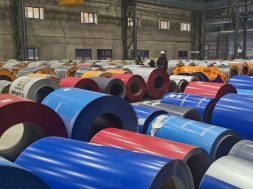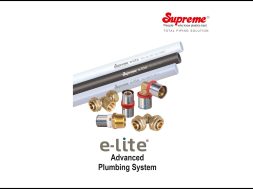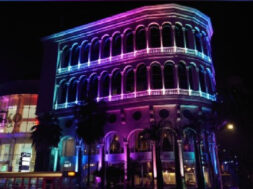Energy Efficiency in Façades & Cladding [Feb 2012]
Mathieu Meur, Managing Director, Meinhardt Facade Technology (S) Pte Ltd explores the methods of achieving energy efficiency of a building façade
In order to discuss what materials can be used for energy efficient facades, first we need to define what an energy efficient façade is. An energy efficient façade can be defined as one that not only achieves an aesthetic design but also is able to save the owner money with reduced energy consumption.
Mechanical ventilation, lighting and electrical appliances form a significant part of a building’s energy use. Traditionally HVAC equipment and system sizing is based on heat flow through the façade. If a façade system helps the building with less heat gain, the air conditioning system uses less energy in order to cool the building down. Therefore an energy efficient façade should have a high thermal performance.
How does one measure the energy efficiency of a building façade? While the carbon footprint of a building may be one parameter, the measure of the embodied energy used to construct and run the building may be a better indicator. With that in mind, we can discuss two aspects in which materials can contribute to an energy efficient façade.
The first aspect is related to the selection of materials that can help save energy before and during construction. The second aspect focuses on materials that can help save energy after construction and within the built environment.
The design and fabrication stage can help save energy through a smart and educated selection of materials. This may entail not only the design and fabrication of the material itself but also the design and fabrication of the façade that makes it energy efficient. For instance, it is essential to take into consideration standardised panel modulations of materials such as glass or aluminium that reduce wastage and optimise the façade design accordingly. For example if a glass panel is of a typical modulation the need to increase any structure or produce additional structure to support an oversized panel is eliminated. Similarly raw glass and aluminium are produced in certain stock sheet sizes. If you consider a raw glass stock sheet of 6m by 3m for instance, a façade vision panel of 3m by 1.5m yields virtually no wastage, as it is derived from cutting the raw sheet in 4 equal parts.
To have an energy efficient façade may also mean considering to use recycled or recyclable materials where possible. Materials like glass, aluminium, steel, concrete and some plastics, can contribute to lowering the energy used in its manufacturing process. For example, recycled aluminium requires only five per cent of the energy used to produce aluminium from iron ore. Electrical power represents about 20-40 per cent of the cost of producing new aluminium from bauxite ore (15 +/-0.5 Wh/kg), while recycled aluminium only takes about 5 per cent of that energy. The manufacturing process can also use recycled energy or materials to help produce the material and one example of this is green concrete, which can be used to produce precast concrete façade panels. Green concrete can be made with reclaimed industrial materials that would otherwise be used for landfill. Recycled materials can also help to reduce CO2 emissions and also enable the material itself to be recycled at the end of its lifecycle.
Also consider using locally or regionally sourced materials where possible. This helps with the local economy and lowers a building’s carbon footprint by reducing expensive transport costs. Green councils are also encouraging this aspect by offering incentives for projects that use locally sourced materials.
Careful and thoughtful selection of these materials can also help to save energy prior to construction. However to achieve a high performing façade one should also consider using the right materials after construction and its use within the built environment. A clear indicator of that would be a building’s energy bill.
By choosing materials that use energy efficient coatings, heat reducing paints, or by incorporating thermal breaks are some ways to reduce the energy consumed in a building after it has been constructed. The reduced embodied energy then takes on a more prominent aspect of the energy efficient façade as the electricity bill can measure energy savings.
As more and more facades are designed using floor-to-floor height glass, the amount of heat gain will be high. Therefore by selecting glass with low-emissivity coatings help to reduce the energy used to cool the building. The latter partially block infra-red radiation (heat) while allowing visible light into the building. The level of thermal performance of glass with low-e coatings can be measured by the selectivity of the coating. Higher performing glass using triple silver low-e coatings are often more expensive but give you better visibility through the glass, while mid-range performing glass reduce heat gain but may offer less visibility through the glass.
One design solution may be to use a mid-range performing glass with an external sunshade to reduce the heat gain into the building. However, the increased cost to fabricate and install the sunshade may be better spent on a higher performing glass with triple low-e coating which also yields lower embodied energy. As mentioned before, a cooler façade will mean less energy that the HVAC system will need to use to cool the building. This also helps with the re-radiation of human heat and appliances (like computers) within the building.
Another area that contributes to heat gain is the opaque surface (solid walls) of a building. In an ideal situation for an energy efficient façade or cladding, the opaque surface should be white or lighter in colour with a 100 per cent gloss level.
However that would mean that all buildings would look alike and we would be all wearing sunglasses constantly. Hence more and more external paints and coating companies are recognising this need and have introduced heat-reflecting paints. This paint technology helps reflect the infrared light from the coated surface, which means less heat being absorbed into the building. A similar type of paint can also be applied to metal panels as well, and can offer a cost and energy-efficient solution to heavy insulation for solid walls.
The other major source of heat gain through a façade comes from the aluminium frames that make up the façade. Metal is a very good conductor of heat, thus by adopting a thermally-broken system can help to minimise this effect. A thermally-broken system would use gaskets or a polyamide strips within the metal framing to cut down thermal conductivity of the frames. Such systems are best utilised in cold continental or dry-heat climates, such as the Northern Europe, Middle East, etc.
By understanding the properties of building materials before, during and after construction is the key to achieving a high performing façade. These material properties should not only deal with its thermal properties alone but also the embodied energy used to create and fabricate these materials for use in a energy efficient façade and cladding system.
Cookie Consent
We use cookies to personalize your experience. By continuing to visit this website you agree to our Terms & Conditions, Privacy Policy and Cookie Policy.









